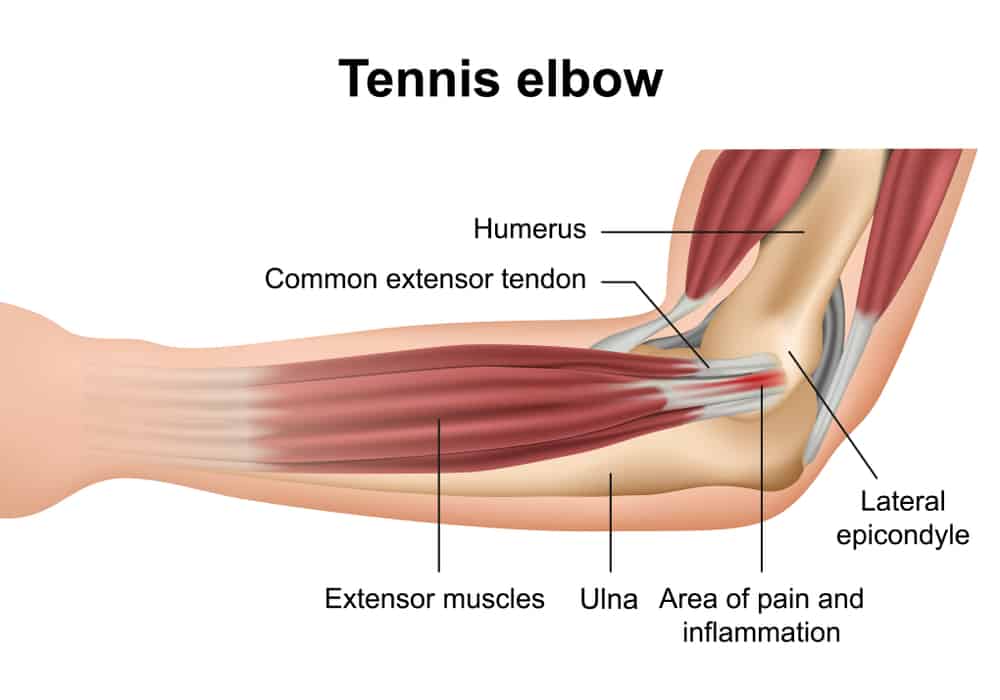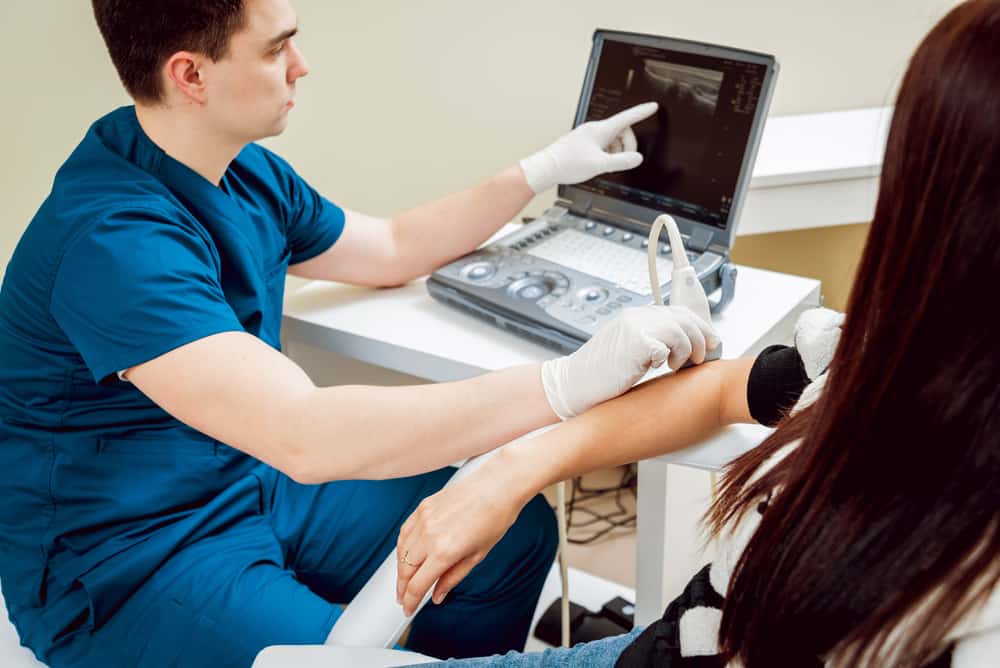Physiotherapy for Tennis Elbow
Tennis elbow is an inflammation over the bony prominence on the outside of the elbow (lateral epicondyle), from which the wrist extensors arise. It is a common origin for the wrist extensors.
The inflammation is caused by repetitive overuse, and is commonly seen in professional tennis players. The condition is not uncommon, but can be a debilitating problem for tennis players. It is usually treated with non-steroidal anti-inflammatory drugs (NSAIDs) and rest. A small percentage of cases require surgical intervention. In the US, tennis elbow occurs more often in women than in men.
What is tennis elbow?
Tennis elbow is a condition that affects the elbow joint. It is caused by repetitive twist of the forearm and thus results in pain, inflammation, and eventual scarring. Treatment typically involves rest and pain relief medications. Surgery may also be necessary in cases where the condition is severe.
Most people who develop tennis elbow have no symptoms or feel only mild discomfort while playing. The pain usually starts with the elbow and spreads up to the shoulder and sometimes to the fingers. Pain may be worse when the elbow is extended, when the arm is held above the head, or when the wrist is bent. Some people also experience discomfort while sleeping.
Tennis elbow is a condition that develops when tendons become irritated by repetitive use of the arm and forarm. Tendonitis, which is basically inflammation of the tendons, is a common symptom as well as cause of tennis elbow. Other possible causes include:
- Arthritis
- Degenerative joint disease
- Traumatic injury
- Injury to the muscles and tendons that support the arm
- poor posture and body mechanics during play
Most cases of tennis elbow resolve themselves within a few months without treatment. If the elbow becomes painful or swollen, however, it can be treated with anti-inflammatory drugs such as ibuprofen (Advil, Motrin) or naproxen (Aleve). Physical therapy or physiotherapy may be helpful. If symptoms persist for more than 6 months, cortisone injections into the tendons around the elbow may be helpful as well. Surgery is rarely necessary to treat tennis elbow.
Symptoms of tennis elbow such as aching, throbbing or burning pain that starts in the elbow and radiates up the arm or down the forearm. Swelling or thickening of the soft tissues around the elbow. Difficulty straightening the arm, these all are indicators of tennis elbow. The pain usually improves when you stop playing tennis or other activities that involve the forearm, especially in twisting motions. The symptoms usually go away within a few weeks to months.More severe cases may last several months or longer.
What are the symptoms?
The symptoms of Tennis elbow can vary and can depend on the individual. In general, tennis elbow symptoms may include pain and inflammation in the forearm, weakness, and fatigue. Tennis elbow is a condition that occurs when the tendon that connects the upper arm bone (humerus) to the forearm bone (radius) becomes inflamed as well as the out bone of the elbow where common extensor tendons of the wrist are attached, gets inflamed. This can lead to pain and inflammation in the forearm, which may worsen if the condition is not treated.
Tennis elbow is a common condition affecting about 10% of people at some time in their lives. Tennis elbow symptoms usually develop after repetitive use of the arm and hand, such as gripping a tennis racquet, holding a hammer, or typing. Tennis elbow is more common in people who play sports, such as tennis, volleyball, or golf, than in people who do not play sports. In fact, about one-third of people who play tennis suffer from the condition at some time in their lives. The most common symptom of Tennis elbow is pain in the forearm, especially when gripping a tennis racquet or holding a hammer. You may also have numbness and tingling in the hand or fingers.Symptoms of Tennis elbow is a painful condition that usually occurs after repetitive use of the forearm and hand. The pain is often felt in the forearm and around the wrist. There may be swelling of the area and tenderness when you try to move your arm. A burning sensation in the fingers or hands Swelling and tenderness in the wrist If you are experiencing any of these symptoms, it is important to see your doctor.
Tennis elbow can be a very frustrating condition to have. It can take a long time to heal if not treated properly .If you are experiencing symptoms of Tennis elbow, there are many treatment options available. Many doctors recommend physical therapy or physiotherapy and exercises to treat this condition. Surgery is sometimes used for severe cases. Symptoms of Tennis elbow is a painful condition that usually occurs after repetitive use of the forearm and hand. The pain is often felt in the forearm and around the wrist. There may be swelling of the area and tenderness when you try to move your arm.
The cause of tennis elbow is not fully understood. It may be caused by repetitive strain on the forearm and hand, such as gripping a tennis racquet Repeated twisting and bending of the wrist and elbow. Repeated lifting of weights. A history of trauma to the elbow or hand Overuse of the arm and hand .Symptoms often occur when a person has poor posture and puts pressure on their arm and hand. Poor posture can also cause muscles to become weak. Weak muscles are less able to support the arm and hand.
What can be done to help relieve this pain
Following are simple self-help treatments can clear up your tennis elbow:
- Rest your arm regularly
- Apply ice or a heat pad to your elbow for 15-20 minutes at a time
- Take ibuprofen as needed
- Do not use the injured arm until it is completely healed
If you experience elbow pain for more than two weeks, contact your doctor or physiotherapist.
Following are the strategies to prevent Injury:
Avoid activities that require excessive arm strength, such as swinging a racquet or throwing a ball.
- Try not to catch your elbow in other people’s clothing or equipment
- Take care of your hands
- Use proper form when lifting and carrying objects
- Work on strengthening your forearm muscles
- Take regular rest periods during your day
- Use a tennis elbow support bandage
If you have been playing tennis for several years, and the pain is worse after you play tennis, your condition may be due to an injury to the bursa sac (tendon sheath) in the elbow. It is more common in women than in men. Overuse and strain are the two main causes of tennis elbow.. Tennis elbow can occur from overuse, including repetitive movements. Tennis elbow can also occur from a single injury. People who have had arthritis, or have had surgery on their elbow, may be at increased risk for tennis elbow.
Following things have shown good results with the treatment of tennis elbow.
- Physiotherapy
- Medication
- Steroid Injections
- Exercises
Exercises which can help tennis elbow
Wrist turn exercise for tennis elbow (Part-1)
- Position a tennis ball at your wrist, so that the ball rests on top of your palm.
- Keeping your hand upright, twist your wrist so that your palm turns towards your shoulder.
- Hold the pose for a few seconds, then repeat.
Wrist turn with weight exercise for tennis elbow
If you’re experiencing tennis elbow, you may benefit from wrist turn with weight exercise.
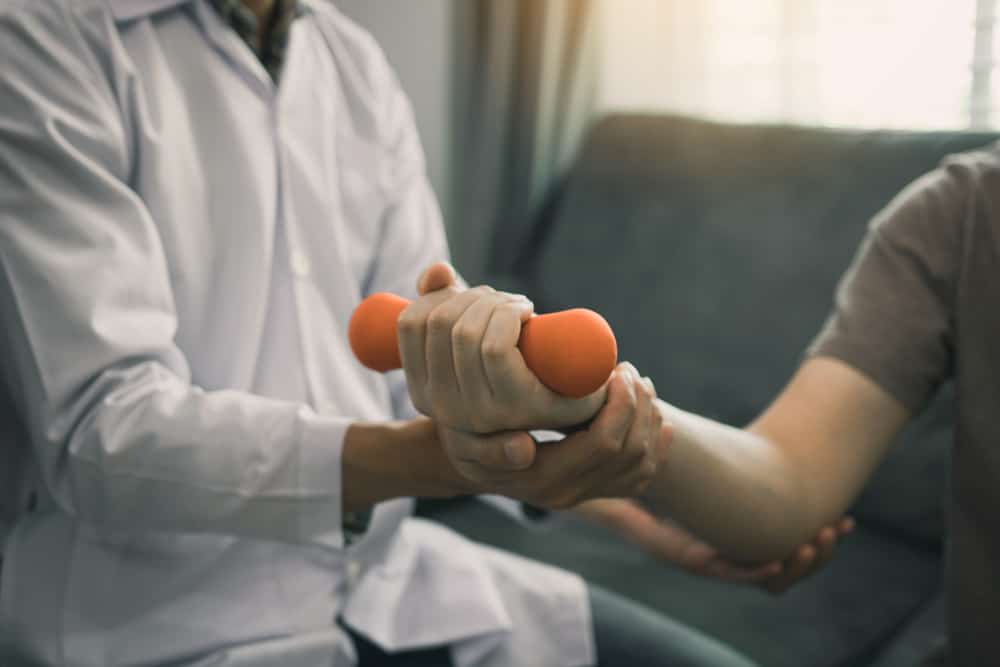
Wrist Turn Exercise with Weight -1

Wrist Turn Exercise with Weight -2
Wrist turn exercise for tennis elbow (Part-2)
- Stand in a comfortable position with your arms hanging loosely at your sides.
- Bend your elbows and bring your hands to your sides.
- Bring your palms together, then separate them.
- Repeat this 10 times.

Wrist turn exercise for tennis elbow (Part-2)
Wrist lift (palm up)
A-Wrist raise (palm down) for tennis elbow Bend your wrist so your fingers are pointing towards the ground. Raise your hand up until your palm is facing up. Repeat 10 times.
B- forearm rotation (palms up) -Holding a tennis racket with your affected hand, rotate your affected forearm inwards and outwards. Repeat it ten times.
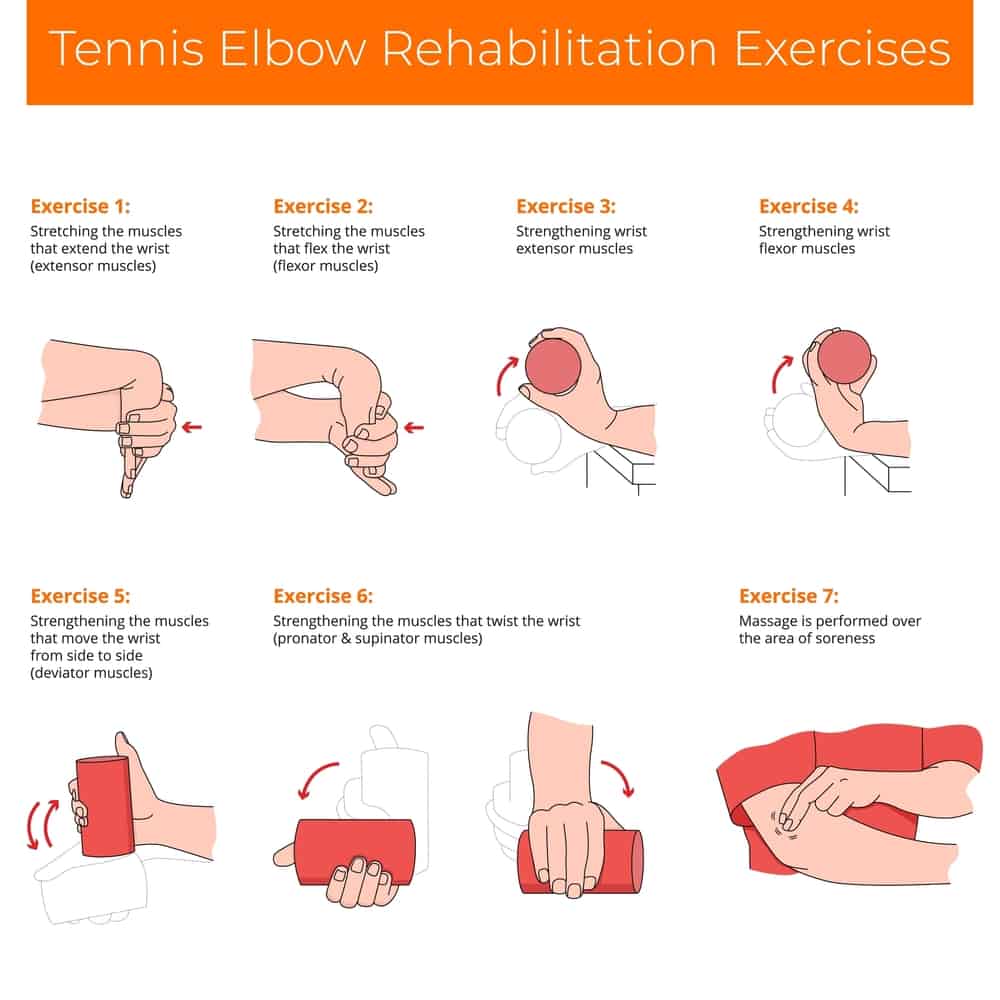
Wrist lift (palm up)
Elbow bend
- Lie on your back with your palms flat on the surface.
- Bend your elbows and bring your hands towards your chest.
- Hold for a few seconds, and then slowly release your arms.
- Repeat the exercise several times.
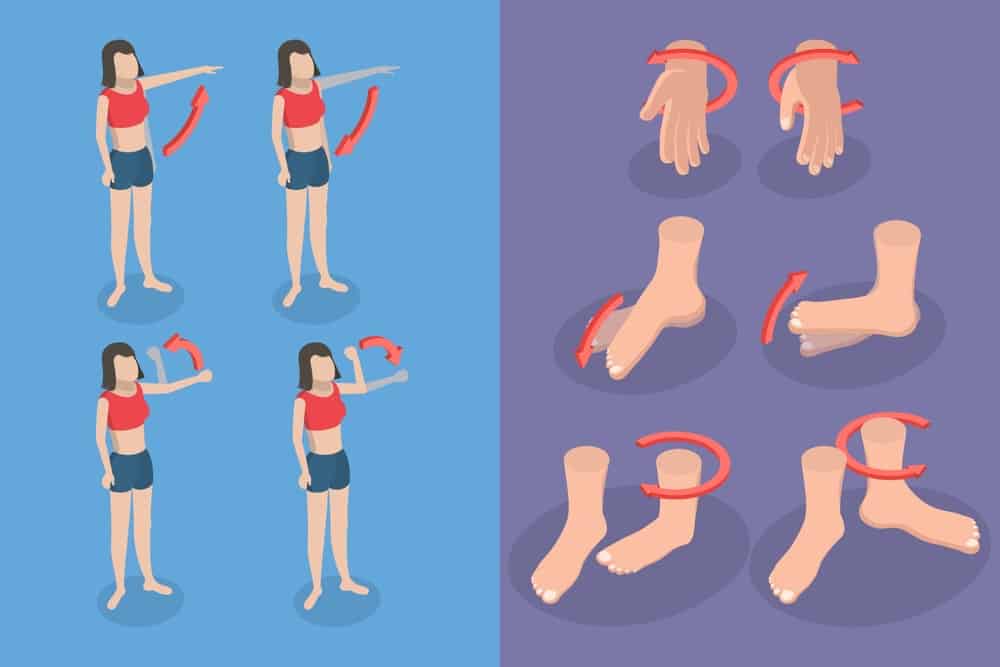
Elbow bend
Wrist stretching exercises for tennis elbow
A wrist flex is a simple exercise that requires little equipment and only takes about 20 minutes to complete.
Wrist Stretch 1 Keeping your arm straight in front with your palm facing down, gently bend your wrist down.Hold for fifteen to thirty seconds. You can put your hand on a flat surface with your palm up. If you bend your wrist, you will see your hand pointing in a different direction. You should pull your fingers towards your hand. Hold for at least 15 to 30 seconds.
You can also do this by holding a towel and letting it roll over your wrist. You can then gently stretch your wrist. If you are using a towel, be sure to use a soft one that does not scratch your skin.
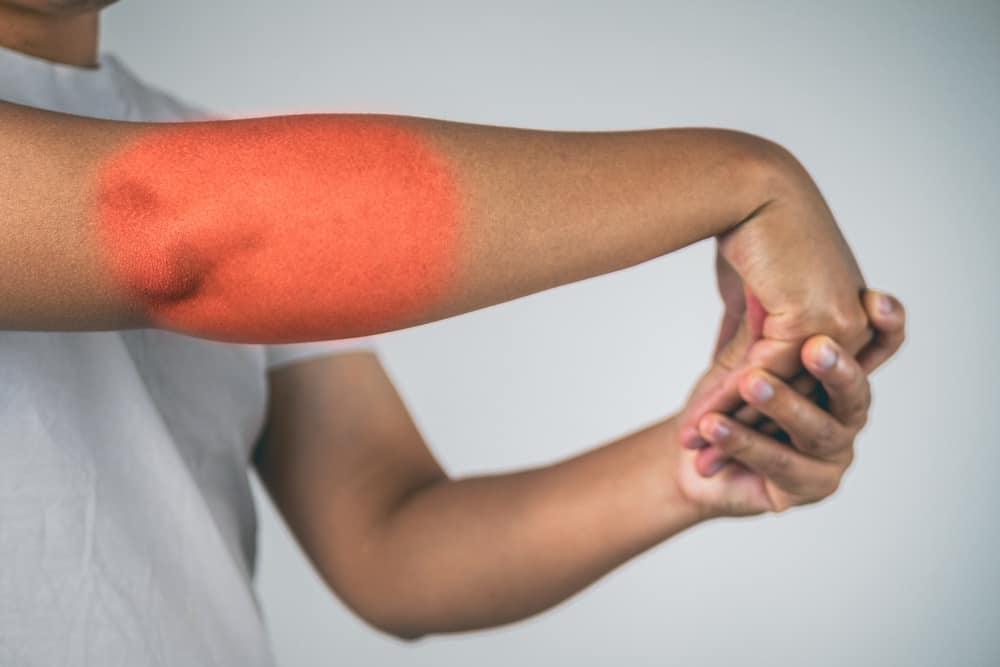
Wrist stretching exercises for tennis elbow
Avoiding or changing activities
There are a few things that people can do to help avoid or change activities that may be contributing to their tennis elbow. Some people may find that avoiding activities that create excessive strain on their elbow, such as throwing or swinging the arm excessively, is helpful.
Others may find that changing activities, or perhaps changing the way they perform certain activities, is helpful. In general, people with tennis elbow should avoid activities that cause excessive strain on their elbows. Activities that cause excessive strain on the elbow include: Swinging the arm back and forth Swinging the arm from side to side Throwing the arm forward Throwing the arm backward ,shooting a tennis ball, swimming.
Some people are able to play tennis without causing excessive strain on their elbows. However, others may find it difficult to play tennis without causing excessive strain on their elbows. People who do not play tennis should ask their doctor about what types of activities they should avoid.
PRP injections for tennis elbow and what are they?
In the past decade, researchers have discovered that there are more than 20,000 stem cells in our bodies. These cells are so important to our bodies because they can replace damaged tissue and repair injury. These stem cells are found in blood and bone marrow. When you cut yourself, these stem cells travel to the injured area and start to repair the wound. When we exercise, our muscles tear.These stem cells then travel to the muscle, and help repair the damage.
Platelets are small particles that circulate in your blood. When your body needs more platelets, these particles go to your spleen, where they form into larger, stronger platelets. These platelets can then be used to repair damaged tissues or make new ones. In the case of sports injuries, these platelets travel to the damaged area and help heal the injury. Platelets contain many growth factors that can help repair damaged tissue. They also contain proteins that can be used to create a scaffold for tissue regeneration.
So what is PRP? Platelet Rich Plasma is simply the concentration of platelets found in your blood. A doctor takes your blood sample, and spins it at high speed. This centrifuge separates the platelets from the red blood cells. The platelets are then injected back into the patient’s body. PRP works best on fresh injuries. It takes two to three weeks for the platelets to work.
Surgery for tennis elbow
If the pain is severe, surgery may be recommended. Surgery may involve removing the affected joint, or a procedure that replaces the joint with a prosthetic.It may also involve changing the way the joint moves, or repairing other damage. Surgery can be effective in relieving pain, but the effectiveness of surgery for tennis elbow has not been proven. Surgery may cause more problems than it solves.
Treatment of tennis elbow is primarily non-surgical. A variety of treatments have been used to help relieve pain and improve function. These include:
-Keep your arm and hand in its natural position (not bent).
-Keep your arm in a neutral position while you are sleeping. Use a firm grip when lifting objects that weigh more than 5 pounds.
-Don’t overdo it with repetitive motion.
-If you have a job that requires repetitive motion of your arm or hand, consider using lighter objects.
-Elevate your arm Elevating your arm helps reduce the strain on your muscles and tendons.
Athletes and non-athletes alike can reduce the risk of developing tennis elbow by following these above simple guidelines:
How a physio and physiotherapy can help you
If you are experiencing tennis elbow, there are many physios in your area who can help. Physios can prescribe exercises and treatments to help reduce inflammation and pain.
However, these treatments are often tailor made and specific to each patient. Therefore, it is important that you find a physiotherapist who has experience with tennis elbow treatment. If you are not sure whether a physio has the right skills for treating tennis elbow, you can ask them if they have treated tennis elbow before or if they have any tips for treating tennis elbow. Tennis elbow treatment is best done with a physio that has experience in treating tennis elbow.
A Physiotherapist will first try to manage the pain by using different techniques and/or modalities which include therapeutic ultrasound , therapeutic laser , shockwave therapy , deep tissue massage , K-T taping and advising the use of Tennis elbow supportive band.
After the pain is reduced then the concentration will be to stretch the muscle and then strengthen it . Sometimes when the pain is not settling , if the physiotherapist has the right certification and experience for acupuncture , he or she might resort to that in order for the muscle to relax and thus reduce the pain.
Final thought
Tennis elbow also known as Lateral epicondylitis is a common injury and is one that many people are affected by it. A tennis elbow can be very painful, and it can cause you to miss your favorite sport. It can also cause pain in the shoulder and arm if it isn’t treated correctly. If you think that you may have a tennis elbow, then seek proper help through a doctor and/or physiotherapist. Tennis elbow is not the same as a golfer’s elbow. Golfer’s elbow is the pain and inflammation in the elbow on the inner side of the elbow whereas tennis elbow is at the outside of the elbow joint.
How can you book an appointment?
We aim to see you within 24 hours so contact us to make an appointment or to find out more information on how we can help you, please call us on 07515280990 or email us primephysiocareluton@gmail.com. We are one of the best clinics whose physios are registered with HCPC, CSP and Physio first as well have enormous experience.

